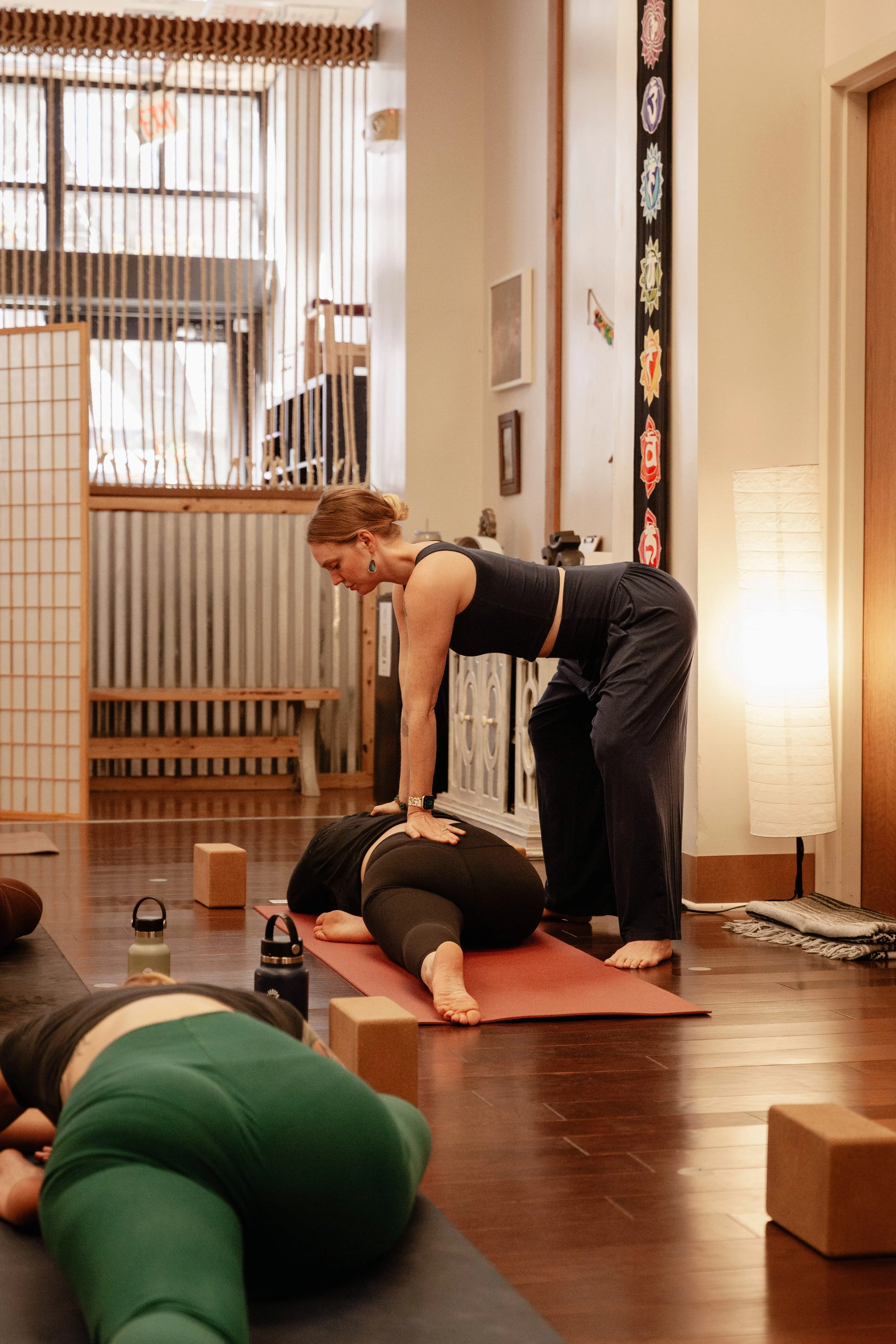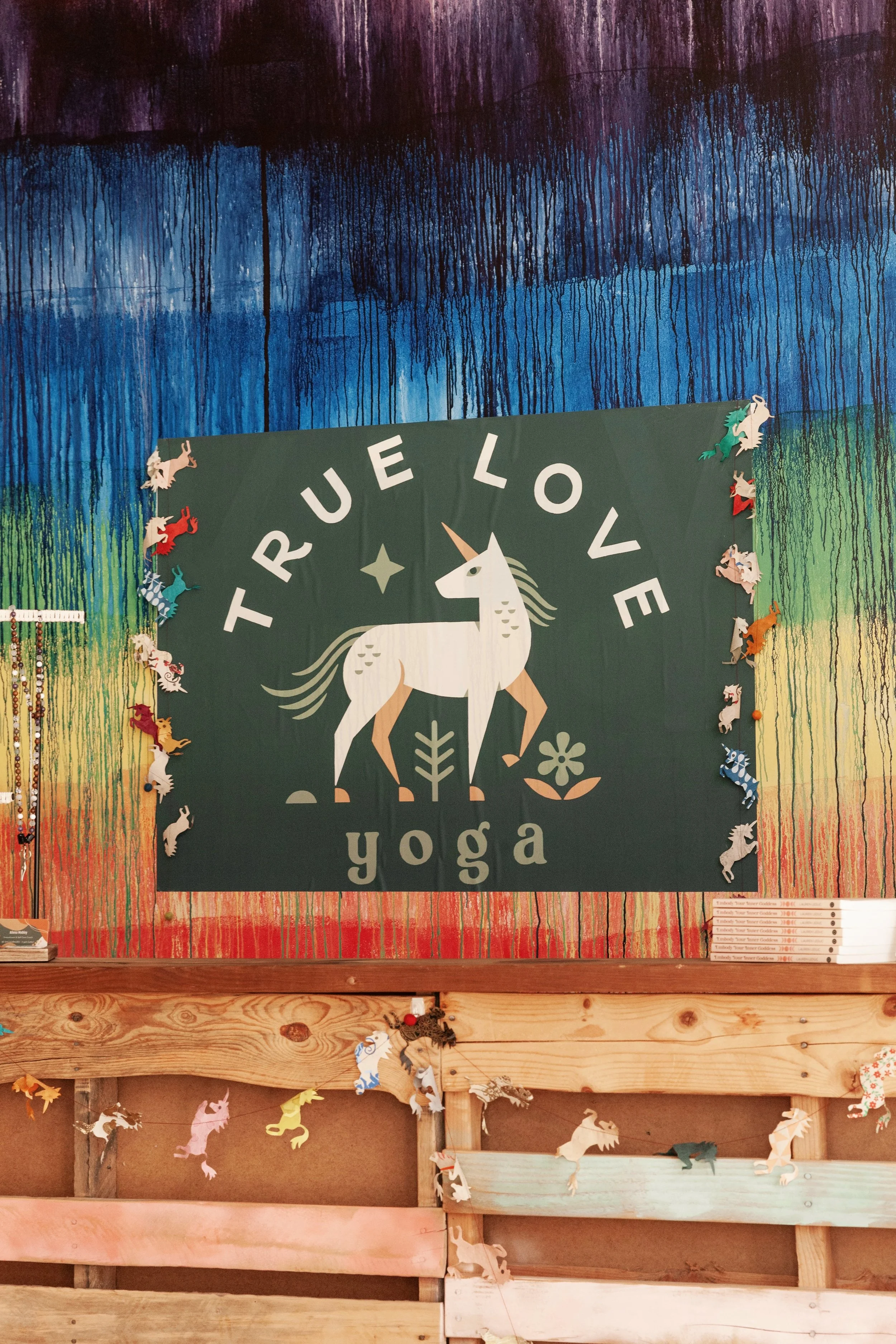
The Art of Yin Yoga: Finding Stillness, Softness, and Surrender
As the seasons turn toward winter, nature calls us to slow down. In yoga, this shift toward quiet and reflection is beautifully embodied in Yin Yoga—a practice of stillness, surrender, and deep listening. While Vinyasa, Hatha, and power practices build heat and strength (the yang side of yoga), Yin invites us into the yin: cooling, introspective, and deeply nourishing.

Abhyasa and Vairagya: The Balance of Effort and Ease
n yoga and in life, we are constantly invited to dance between two forces—Abhyasa (discipline, practice, effort) and Vairagya (surrender, letting go, acceptance). These complementary teachings, rooted in Yoga Sutra 1.12, remind us that “the fluctuations of the mind are stilled through practice and non-attachment.”
Finding harmony between these two energies can be one of life’s greatest lessons—and one of yoga’s most powerful gifts.

The Five Currents of Life: Exploring the Prana Vayus
Yoga invites us to look beyond the physical postures and into the subtle layers of our being. One of the most profound yet less-discussed aspects of yoga is the prana vayus—the five currents of life force energy that flow through the body. Rooted in the Upanishads and expanded upon in classical yogic texts, these vayus reveal how energy moves within us physically, emotionally, and spiritually. By understanding them, we can add intention and depth to our practice on and off the mat.

The Yoga of Savoring: Presence, Contentment, and Gratitude
As the pace of the year quickens and the world invites us into busyness, yoga reminds us to slow down—to savor, to breathe, and to be present. This Thanksgiving week, let’s explore how true gratitude isn’t something we force, but something we feel through embodied awareness and mindful presence.

The Sacral Chakra: Flow, Creativity, and the Wisdom of Pleasure
The journey through the chakras continues with the second energy center—the Sacral Chakra, or Svadhisthana. If the Root Chakra grounds us into safety and belonging, the Sacral Chakra invites us to move, create, and feel. It is the seat of pleasure, emotion, sensuality, and flow—the energy that gives color and rhythm to life.

Answering the Call: Is It Time for Your 200-Hour Yoga Teacher Training?
Every yogi remembers that moment—the quiet, subtle voice inside whispering, “There’s something more for you here.” Maybe you’ve heard that call, too. Perhaps you’ve been practicing for a while and feel ready to go deeper into yoga philosophy, alignment, and self-discovery. Or maybe you simply crave a meaningful reset and a community of like-hearted people.
If you’re feeling that gentle pull, this post is for you.

From Triggered to Tranquil: Yoga’s Guide to Inner Calm
Yoga isn’t only about the poses—it’s also about how we meet the world and ourselves with clarity and compassion. Patanjali’s Yoga Sutra 1.33 offers timeless guidance for emotional intelligence and equanimity. Known as the “locks and keys,” this teaching invites us to respond to life’s challenges with wisdom instead of reactivity.
By cultivating friendliness toward the happy, compassion for the suffering, delight in the virtuous, and equanimity toward the non-virtuous, the mind retains its undisturbed calm.

Trick or Truth: Yoga Philosophy for the Algorithm Age
Halloween may bring up images of ghosts and goblins, but for many of us, the real monsters live inside our phones. Social media is one of the most powerful—and at times frightening—forces shaping our lives today. It promises connection, but often delivers distraction, comparison, and manipulation.
Through the lens of yoga philosophy, we can bring awareness and balance to our digital lives, transforming social media from a trap into a tool.

Yoga Nidra: The Art of Yogic Sleep
Yoga invites us into balance—between movement and stillness, effort and ease, doing and being. One of the most powerful practices to embody this balance is Yoga Nidra, also known as yogic sleep. This guided meditation technique creates a bridge between wakefulness and sleep, offering profound rest, nervous system regulation, and even spiritual insight.

The Power of Restorative Yoga
Restorative yoga is one of the most profoundly healing and nourishing practices in yoga, yet it is often overlooked in a culture that glorifies productivity and busyness. Unlike more active forms of yoga, restorative is not about movement, intensity, or even stretching—it is about intentional rest.
When practiced regularly, restorative yoga offers balance, nervous system support, and deep emotional healing. It teaches us the art of surrender, helping us release effort and reconnect with ease.

Root Chakra 101: Grounding, Safety & Belonging
Welcome to the first post in this chakra mini-series. If you want a broader primer, you can read/listen to the overview episode on chakras first—but you can also dive right in here and circle back later.
The root chakra—Muladhara (Sanskrit for “root support”)—is the foundation of the seven-chakra system. It’s located at the base of the spine/pelvic floor and governs the legs and feet. Whether you relate to chakras as subtle anatomy or as a rich metaphor, this lens offers a practical way to reconnect with your body, your home, and your sense of enoughness.

Launching the True Love Yoga 300-Hour Advanced Teacher Training
For many yoga teachers, completing a 200-hour Yoga Teacher Training is a transformative milestone. It provides the tools to teach confidently, share philosophy, and step into leadership. But for some, the journey doesn’t end there. The call to go deeper—to refine, expand, and embody yoga at a more profound level—becomes undeniable.
That is where the 300-hour Advanced Yoga Teacher Training comes in.

Celebrating 10 Years of True Love Yoga: A Decade of Community, Growth, and Heart
This year marks a milestone close to my heart: True Love Yoga turns 10 years old. What began as a spontaneous outdoor yoga class in 2015 has grown into a thriving community that has weathered ups, downs, and transformations—all while staying rooted in love, authenticity, and connection.
As I reflect on the past decade, I’m filled with gratitude for every student, teacher, and supporter who has helped shape this journey.

Back to Yoga: Recommitting to Your Practice
As summer winds down and fall routines begin, the season invites us to reconnect—with rhythm, structure, and most importantly, with our yoga practice. Just like sharpened pencils and fresh notebooks symbolize new beginnings, the transition from summer to fall offers a natural moment to reset and recommit to the mat.

Intro to Inversions: A Yogic Journey Upside Down
Inversions in yoga—whether gentle or advanced—offer a unique opportunity to cultivate strength, confidence, and play. While these postures can be intimidating, they also invite us to shift perspective, confront fear, and rediscover joy in movement.

Finding Your Voice as a Yoga Teacher
For yoga teachers, one of the most powerful tools in your teaching journey is your voice—not just how you sound, but your unique expression, perspective, and presence. Finding your voice is a dynamic process that evolves with time, practice, and experience.

Chakras: Map or Metaphor?
The concept of chakras has captivated spiritual seekers, yogis, and wellness practitioners for centuries. Are they a literal energy system? Are they metaphorical representations of our emotional and psychological life? Or are they something else entirely?

Yoga for Desk Workers: Stretches, Breath, and Mindful Movement for Modern Life
Many of us spend long hours sitting—working at desks, driving, or using screens—which can lead to poor posture, physical discomfort, and mental fatigue. Yoga offers practical tools to help rebalance the body and restore mental clarity, even in small pockets throughout the day. Here are some accessible ways to bring movement, breath, and awareness into your daily routine.

Balancing Effort and Ease: Sthira and Sukha On and Off the Mat
One of the most foundational yet nuanced concepts in yoga is the balance between effort and ease. Known in Sanskrit as sthira (steadiness) and sukha (ease or sweetness), this dynamic is at the heart of yoga practice and philosophy—from posture to breath, from nervous system regulation to the way we live our daily lives.

The Meaning and Magic of Om
In the ever-modernizing world of postural yoga, it’s easy to lose touch with ancient symbolism and spiritual context. Yet nestled at the heart of many classes lies a single resonant sound with the power to unite breath, body, and spirit: Om.
